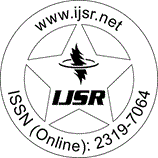Downloads: 6 | Views: 347 | Weekly Hits: ⮙1 | Monthly Hits: ⮙2
Research Paper | Pathology | India | Volume 11 Issue 1, January 2022 | Popularity: 4.7 / 10
Mast Cell Distribution in Various Prostatic Lesions and their Significance: A Comparative Study between Benign Prostatic Hyperplaisa and Carcinoma Prostate
Dr. Sanjeev Kumar, Dr. Md. Alimuddin Ansari, Dr. Sunil Kumar Mahto
Abstract: In prostatic lesions, the role of mast cell infiltration varies with the type of the lesion. They mediate the biological consequences such as mitogenesis, extracellular matrix degradation and spread of tumors by recruiting various growth factors and cytokines. In BPH, there is significant increase in mast cell count when compared to normal prostate. Mast cells help in progression of nodular hyperplasia by release of their degranulation products and mediators. In Ca-Prostate, the pro-tumor effect of mast cells is due to secretion of histamine and growth factors such as VEGF, PDGF, SCF, Nerve growth factor and metalloprotease, that contribute to majority of proteolytic components necessary for tumor invasiveness. The major pro-tumor effect of mast cells is the angiogenic activity brought about mainly by secreting VEGF which is reflected by increased vascularity in prostate cancer.
Keywords: Mast Cell Distribution, Prostatic Lesion, Benign Prostatic Hyperplaisa, Carcinoma Prostate
Edition: Volume 11 Issue 1, January 2022
Pages: 1081 - 1085
DOI: https://www.doi.org/10.21275/SR22119185044
Please Disable the Pop-Up Blocker of Web Browser
Verification Code will appear in 2 Seconds ... Wait
